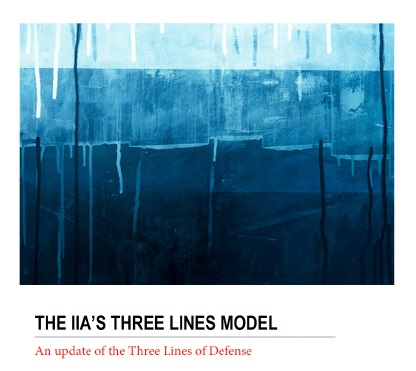Amid rapid change, unprecedented new risks, and the growing complexity of organisations, The Institute of Internal Auditors (IIA) recently announced a major update to the widely accepted Three Lines Model. Originally known as the Three Lines of Defense, the model has gained popularity for organising governance and risk management in organisations. However, acknowledging that risk-based decision-making is as much about seizing opportunities as it is about defensive moves, the new Three Lines Model helps organisations better identify and structure interactions and responsibilities of key players toward achieving more effective alignment, collaboration, accountability and, ultimately, objectives.
It clearly outlines the roles of various leaders within an organisation, including oversight by the board or governing body; management and operational leaders including risk and compliance (first- and second-line roles); and independent assurance through internal audit (third line). And it addresses the position of external assurance providers. The model applies to all organisations, regardless of size or complexity.
“The Three Lines Model has largely been viewed as the basis for sound risk management,” said IIA President and CEO Richard F. Chambers, CIA, QIAL, CGAP, CCSA, CRMA. “For implementation by organisations on both a reactive and proactive basis, these updates help modernise and strengthen application of the model to ensure its sustained usefulness and value.”
A task force spearheaded by The IIA and representing audit practitioners, risk and compliance executives, stakeholders and others came together to provide this update in part to highlight the important relationships between central and common components of organisations and to weigh the concept’s strengths, application and usefulness toward ensuring its continued relevance in today’s operational climate.
“For more than two decades, myriad organisations embraced the former model, attracted by its simplicity in describing risk-management and control responsibilities in three separate lines,” said task force leader and incoming IIA Global Chairman Jenitha John. “The update reinforces that organisations must determine appropriate, pragmatic structures for themselves, taking into account their objectives and circumstances against a backdrop of an ever-evolving risk landscape.”
Added Chambers, “Risk management goes beyond mere defense. Organizations need effective structures and processes to enable the achievement of objectives and support strong governance and risk management. The updated Three Lines Model addresses the complexities of our modern world.”
Further details about the Three Lines Model, including key principles toward applying the model and an updated illustration of the model, are on The IIA’s website.
Source: The Institute of Internal Auditors (IIA)



